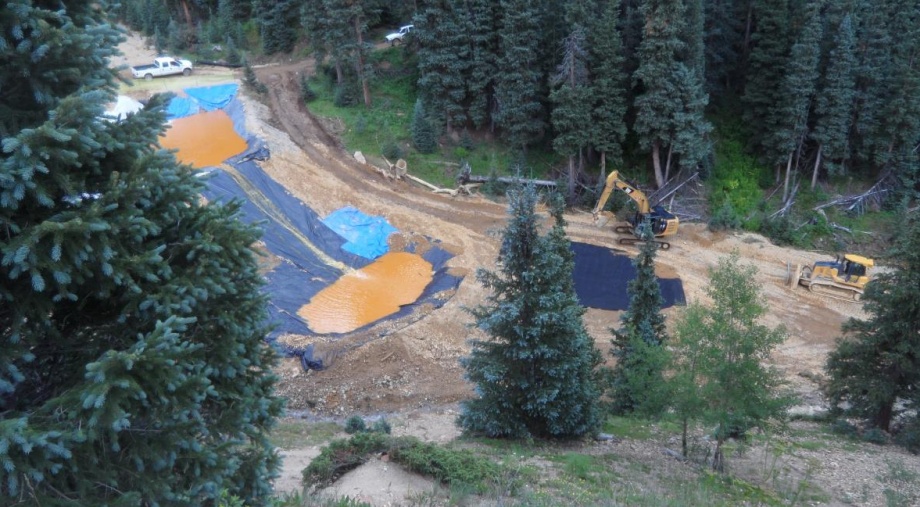Build a tailings dam right and save money

Emergency tailing ponds constructed in response to the 2015 Gold King Mine Spill in Colorado, pictured on August 7, 2015. The ponds were constructed to contain a spill created by EPA workers, while trying to install a cleanup system on the main tailing pond for the long closed mine. Image and caption from Wikimedia.
It’s been more than a year since the Mount Polley Mine in B.C. experienced one of the worst dam breaches in Canada’s history. And while the mine is back in business, critics are again raising the alarm.
In a letter to B.C. Premier Christy Clark this week, Williams Lake Mayor Walter Cobb urged the province to issue a permit that allows Imperial Metals to discharge clean water from a containment pit.
Cobb warned that the temporary storage pit is reaching capacity and an overflow could be “catastrophic.”
A spokesperson for the Ministry of Environment told the Williams Lake Tribune that a decision on that permit will be made by the end of this month.
The Tribune predicts a further delay could halt operations at the mine.

Over 35 years engineering experience on mining, civil, geotechnical and site remediation projects. Jack has a P.Eng, a B.Sc. in Civil Engineering, an M.Sc. (Eng.) in Geotechnical Engineering and a post-graduate law degree. He has worked on numerous projects throughout southern Africa, Europe, Canada and the United States.
What this situation—and other recent high-profile tailings dam breaches—highlights is the intense public scrutiny of mining projects and immense cost of not doing things right.
The cost for Imperial Metals of the Mount Polley breach has reached more than $60 million in rehabilitation alone, but there’s also the cost of lost production and the hit to the company’s share price.
Then there’s Samarco in Brazil and this month’s dam spill—a “disaster beyond proportions,” according to InfoMine’s Jack Caldwell, who says there’s no way to estimate the cost of the accident at this point.
But what is clear is that “[a] failure is a lot more expensive than doing it right,” Dirk van Zyl, professor of mining engineering at the University of British Columbia told the Globe and Mail.
As a recent study points out, disastrous spills are increasing in frequency, severity, and cost.
These failures are the usually the “result of poorly-informed, consciously-made business and management decisions,” writes one of the co-authors.
One way to avoid failures is to stay informed. Caldwell’s course on on advanced tailings management looks at the latest developments in wastewater management and draws on past failures to help all those involved in the process avoid catastrophic incidents.

{{ commodity.name }}
{{ post.title }}
{{ post.date }}

Comments